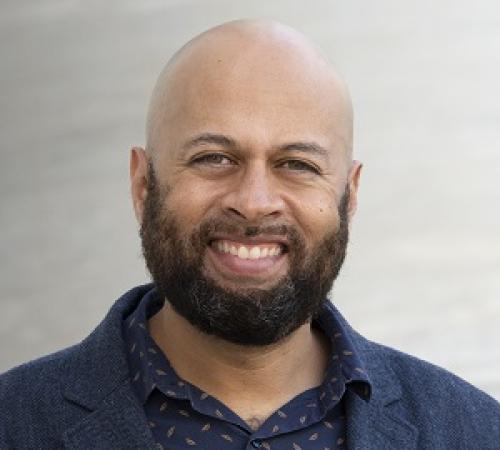 Profile courtesy of the Harvard Brain Science Initiative and Humans of HBI.
Profile courtesy of the Harvard Brain Science Initiative and Humans of HBI.
Image: Anna Olivella
Carlos Ponce’s lab, which studies visual recognition, came to HMS from Washington University in St. Louis. Ponce received his MD-PhD from Harvard Medical School and his Bachelor of Science from the University of Utah. He is originally from Chihuahua, Mexico.
How would you describe your work for someone who is not a neuroscientist?
I study visual recognition: how neurons in the brain allow the recognition of objects in the world, like faces and cars. This is an exciting time to be studying vision because there are new tools in machine learning and artificial intelligence that we can use to advance our understanding of the brain.
For example, you might have seen so-called ‘deepfakes’ on the internet. These are fascinating videos where you can see individuals saying words and using the exact same speech pattern being transposed and enacted on the faces of famous folks like President Obama. You can say anything and have the avatar repeat those words. That new type of technology is based on so-called generative networks, which are basically image generators: learned neural networks that can create images that look a lot like those in the real world.
One of the things that we can now do in neuroscience is use that technology to extract information encoded in the brain. We can pair these generators in a closed loop with neurons in the brain of an animal. The generators are guided by neuronal activity, using an algorithm, into creating images that simulate information the neuron has learned to encode about the world. That tells us which types of information the brain finds most important in the world, a kind of internal model. That will help us identify or develop better automated systems for visual recognition.
What did you want to be when you were a child?
I grew up on a farm in Mexico. I had no understanding of the kind of academic and medical careers that might one day become available to me. I knew that I loved animals. Once my family moved to the United States and I started high school, I knew that biology was going to sustain my attention and passion.
What do you do for fun?
Science is what I do for fun! During the pandemic, I rediscovered hiking and how easy it is to find animals and insects out there in the world. When I lived in Utah, friends would try to get me to go hiking and I thought, “That’s just walking outside.” If only someone had pitched it in terms of discovering animals or hiking for fossils — oh my gosh!